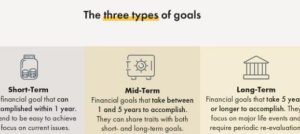How Long Is a Short Term Goal Typically?
Short term goals are instrumental in the strategic planning process, offering immediate targets that are essential for the progression towards longer-term aspirations. These goals are characterized by their quick attainability, which motivates continuous effort and provides frequent rewards. This article explores the typical duration of short term goals and how this timeframe impacts their design and effectiveness.

Defining the Duration of Short Term Goals
Short term goals are generally defined by their limited timeframe, which typically ranges from a few days to no more than a year. This duration is strategically significant as it allows for rapid feedback and adjustment, which is crucial for adapting to changing circumstances or improving upon the current strategy.
Key Aspects of Short Term Goal Timelines:
- Immediate Objectives: These goals are often set to be achieved from as little as a few days up to three months.
- Quarterly Projects: Many corporate and personal development plans use quarterly milestones as short term goals to assess progress and realign strategies.
- Annual Targets: In some contexts, short term goals may extend up to a year, particularly for more complex objectives that require a slightly longer timeframe to accomplish.
Impact of Duration on Goal Setting
1. Enhances Motivation
- Fact: Short term goals provide quick wins, crucial for maintaining high levels of motivation. According to psychological research, achieving small successes boosts dopamine levels in the brain, which increases feelings of reward and drives further action.
2. Allows for Flexibility
- Fact: The short duration associated with these goals allows individuals and organizations to adapt more flexibly to changes. This is vital in today’s fast-paced environments where adaptability can significantly influence success.
3. Facilitates Measurement and Adjustment
- Fact: The measurable nature of short term goals, combined with their shorter timelines, enables more frequent evaluations. This continual assessment helps in fine-tuning tactics or strategies promptly. Studies indicate that regular goal review increases the overall achievement rate by up to 40%.
Examples of Effective Short Term Goals
1. Sales Increase
- Goal: Increase monthly sales by 10% over the next three months.
- Rationale: A concise timeline allows sales teams to quickly implement tactics and see measurable results, enhancing responsiveness to market dynamics.
2. Personal Health Improvement
- Goal: Lose 5 pounds in one month.
- Rationale: The one-month period is sufficient to see tangible results from dietary adjustments and increased physical activity, encouraging continued effort towards health.
3. Professional Development
- Goal: Complete a certification course in 60 days.
- Rationale: Setting a two-month goal for professional training ensures enough time for learning and assimilation, while still being short enough to maintain focus and motivation.
Why How Long Is Short Term Goal Is a Crucial Consideration
In conclusion, understanding the typical duration of short term goals is crucial for their effective formulation and achievement. Whether set for a few weeks, a quarter, or up to a year, these goals are tailored to provide quick results and feedback, essential for immediate improvements and steady progression toward long term goals. By strategically defining the duration of these goals, individuals and organizations can ensure they remain agile, motivated, and aligned with their overarching objectives, thus optimizing their potential for success.